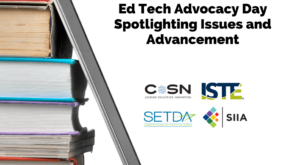The Journalism Competition and ...
The Race to Fill Classrooms: Teacher Shortages Across the Nation
In Spring 2020, teachers packe ...
New Bipartisan Consumer Privacy Bill Faces Long Road Ahead
The highly anticipated text of ...
SIIA Hosts Joint Ed Tech Advocacy Day Spotlighting Issues and Advancement
Last week, SIIA hosted a joint ...






